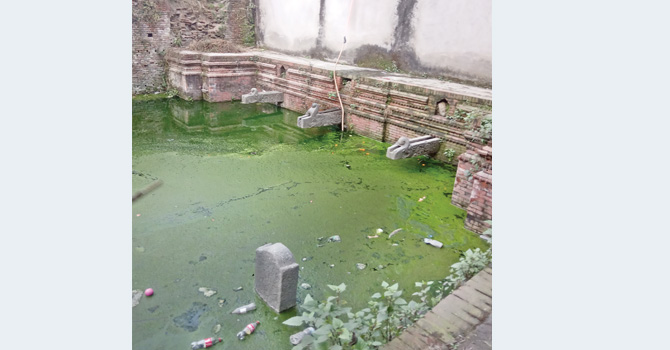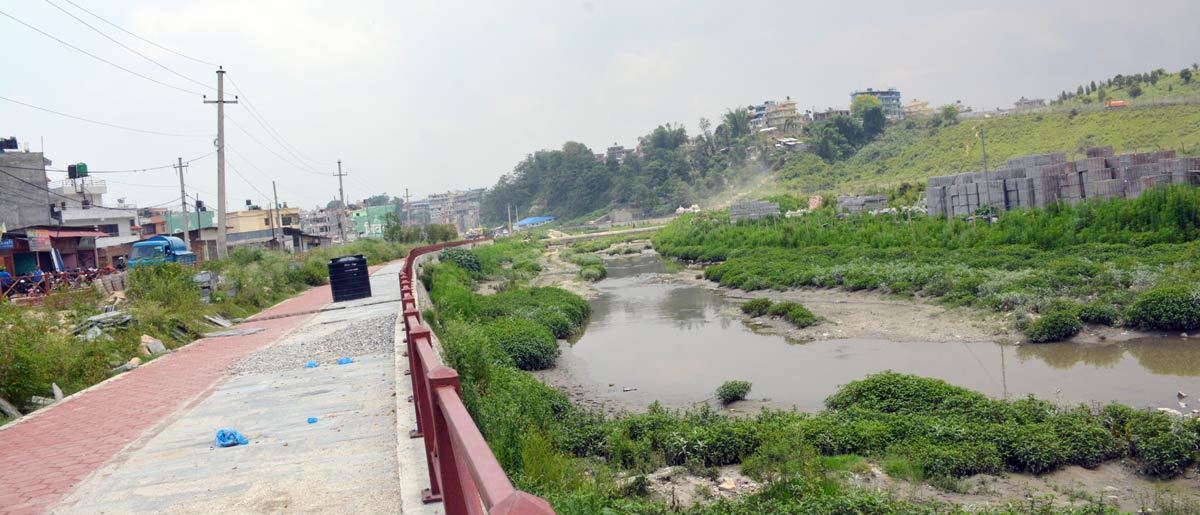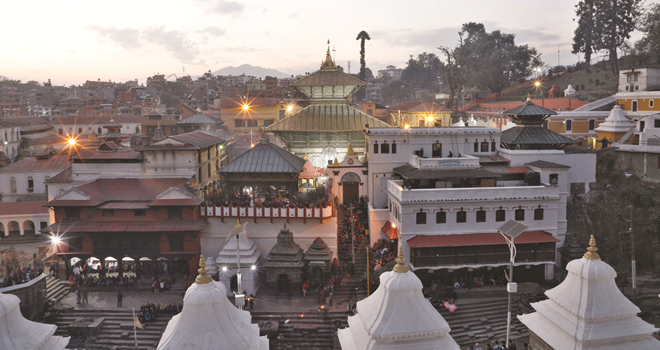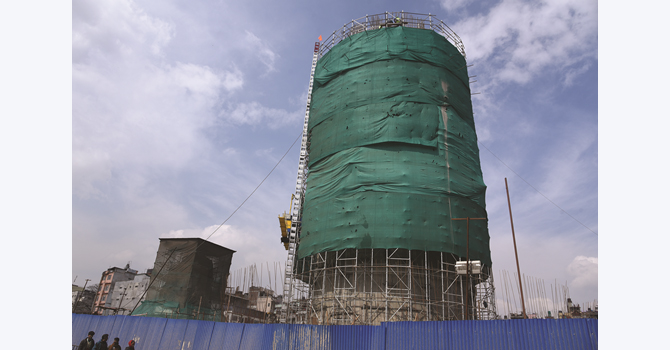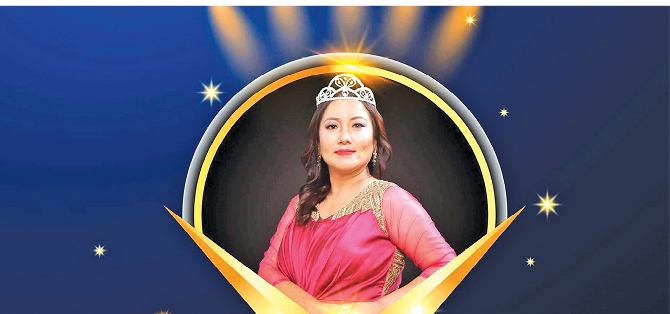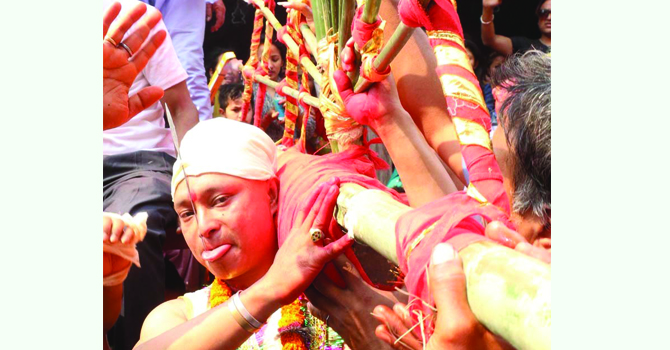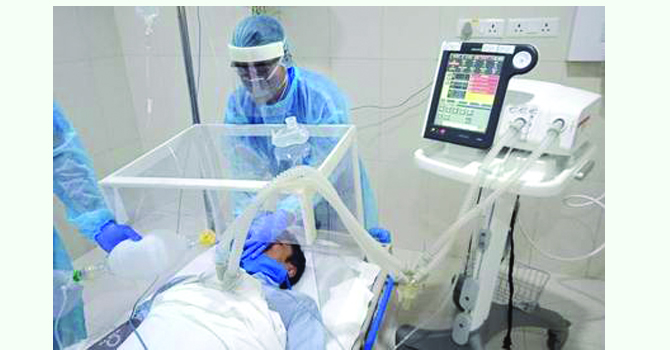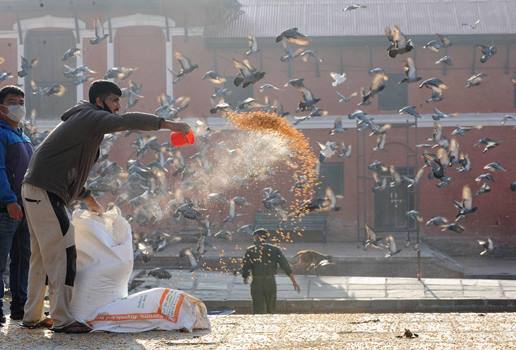Jatras, Festivals of Bhaktapur
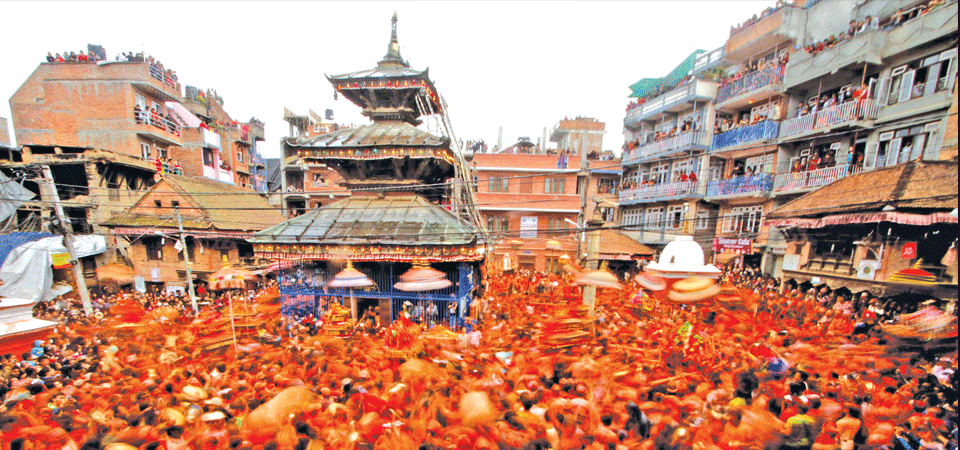
Binu Shrestha
The three cities in the Kathmandu Valley- Kathmandu, Patan, and Bhaktapur are known for their culture and festivals. Among them, Bhaktapur is famous for having special festivals, which the locals observe in their unique ways.
With the Nepali New Year Day just round the corner, a series of festivals are taking place in this ancient land of Newars. The beating of ‘dhime’ (a typical Newari drum) and music from other instruments fill the air and people are excited to celebrate festivals with much fanfare.
The festive mood of all people was spoiled last year owing to the outbreak of the COVID-19 pandemic. Many festivals including the chariot procession of the White Machhindranath, Biska Jatra, Bajrayogini, Tongue Piercing and Sindoor festival were cancelled last year. This year the stakeholders and locals are keen to hold and participate in these festivals by adhering to the government's health protocols.
Colourful, Energising
Among all the aforementioned festivals, the Biska Jatra, Tongue Piercing and Sindoor festivals are the most colourful and energising.
The annual Biska Jatra begins from the last week of the month of Chaitra of the ongoing year. This festival continues for four days before and after the Nepali New Year Day.
The festival starts with the procession of the chariot of Bhairavnath from Taumadhi. The wooden chariot is 35-feet high. The three-storied structure of the chariot is modelled on a pagoda-temple structure. The chariot pulled by the locals is a very important event for the people of Bhaktapur. During this festival, all the temples of Bhaktapur are kept open for the public for viewing and worship throughout the festival period.
The Jatra starts after performing a special tantric ritual at the Bhairav Temple in Taumadhi Tole in Bhaktapur. On the first day of the festival, the chariot is pulled to several areas of the upper Bhaktapur part (Thane) such as Kwachhe, Sakotha, Sukuldhoka, Golmadi, Inacho, Dattatreya and Bulucha, Nasamana, Bansagopal and then taken to Tekhapuku of the lower part (Kwone).
The first-day chariot pulling procession is halted after the chariots of Bhairav and Bhadrakali reach Gagahiti. The chariot of Bhadrakali is pulled from Gagahiti and reaches Ajima Ghag of Khalatole on the second day. The special puja ceremony is to be organised by Guthi Sansthan at Gahahiti sacrificing the animal for Bhairav on the third day. The erection of the ceremonial pole as much as 80 feet in height on the eve of New Year Day is the main attraction of the festival.
Apart from the Chariot-pulling, the erection and crashing of the pole are the main attractions of this festival. The exciting moment features a kind of tug-of-war between the upper part (Thane) and down part (Kwone) residents while they pull the chariots of Bhairavnath and Bhadrakali in the ancient town of Bhaktapur.
People enjoy watching the competition between the locals of the two parts. As the pole crashes to the ground, it is believed, the new Nepali year begins officially. Earlier, the Biska Jatra was limited only to the erection and the crashing of the pole.
Malla Era Festival
During the Malla era, the festival would be celebrated by pulling the chariots of Bhairavnath and Bhadrakali at each area. The same exciting moment would feature a tug of war between the upper and lower part locals from the last day of the festival at Taumadhi tole. The residents of both parts pull the chariots towards their part by pulling the chariot from both sides.
The people succeeding in pulling the chariots to their locality would be declared the winner. Then after the festival formally ends and the idol of Bhairav is removed from the chariot and is kept inside the temple as per the Tantric ritual.
The eight-night and nine-day festival of Biska: Jatra is an important occasion that brings families, friends, and relatives together to strengthen relationships.
The Medieval age, the golden age of Nepalese art, craft and architecture, is the period of the origin of the Biska festival.
However, it is believed that king Jagajyoti Malla had started this festival. According to a legend, a man had married a princess and died of snakebite after the marriage. Later, nobody showed interest in marrying the princess thinking that it would bring them bad luck. One day, a merchant arrived in the village and married the princess.
The festival is celebrated to commemorate the defeat of the demon. Two dozen chariots are also carried through the streets during the festival of Biska Jatra. Many people perform religious activities for fulfilling their inner desires. The celebration of the festival also offers a great variety of food, drink, music, dances and carnivals for the people to enjoy.
The tongue piercing festival is the main attraction at Bode of Madhyapur Thimi which grandly celebrates the second day of the New Year. On this day, a person pierces his tongue with a 10-inch long and 3-line thick iron needle. With the famous tongue-piercing festival of Bode approaching, Buddha Krishna Baga Shrestha is preparing to take part in the daring adventure for the 8th time.
He pierced his tongue for the first time 11 years ago. Later, he stopped piercing his tongue. However, Shrestha again took part in the ceremony in 2017 after Juju Bhai Basan stopped giving continuity to the age-old tradition.
Some mandatory rules and regulations the tongue piercer should follow for three days before the main festival day. The fasting process starts three days before the tongue-piercing day and he has to stay far from the animals and women. There is a strong belief that something wrong will happen if he feels pain or suffers bleeding while piercing the tongue. If he ignores such rules and regulations bad luck would befall him.
The iron needle used to pierce the tongue is prepared specially. The needle is stored in grease for a week. The needle is immersed in pure mustard oil till the main day of the festival arrives. The mass of the people from different parts gathers to observe the tongue piercing ceremony. The person is brought to the stage amid the playing of the Newari instruments.
After the tongue is pierced, the person has to visit different roles carrying half-moon shape Mahadeep which is made of bamboo. It takes over an hour to go around the city area. When the visit halts at Bhagutole after passing through several localities, the tongue piercing festival formally ends.
The iron needle is then taken out and the tongue hole is filled up by mud. The special needle is placed at the Ganesh Temple’s door. The person can eat and speak only after performing Natyambar Puja. The tongue piercing ceremony that starts after the conclusion of the chariot procession of several gods and goddess including Ganesh, Nilbarahi, Mahalaxmi and Kalika at the same area where the tongue piercing was held.
Festivities in Thimi
The ancient locality of Madhyapur Thimi, now a municipality, has its spectacular ways of celebrating the Sindoor festival. It is a major attraction of Thimi, which starts on eve of New Year and continues for four days. The festival is celebrated at Thimi, Bode and Nagadesh.
Several palanquins are carried with their musical bands and processions. During the procession, red vermillion (a blood-red powder) powder and other colours are thrown at each other by the participants of the procession, which is known as Sindoor Jatra. Of the several palanquins, the palanquin of Siddhi Ganesh is attractive and of higher importance. They exhibit Balkumari Yatra of several palanquins on the second day of the New Year at Balkumari Temple.
(Shrestha is a journalist at this daily)
Recent News

Do not make expressions casting dout on election: EC
14 Apr, 2022
CM Bhatta says may New Year 2079 BS inspire positive thinking
14 Apr, 2022
Three new cases, 44 recoveries in 24 hours
14 Apr, 2022
689 climbers of 84 teams so far acquire permits for climbing various peaks this spring season
14 Apr, 2022
How the rising cost of living crisis is impacting Nepal
14 Apr, 2022
US military confirms an interstellar meteor collided with Earth
14 Apr, 2022
Valneva Covid vaccine approved for use in UK
14 Apr, 2022
Chair Prachanda highlights need of unity among Maoist, Communist forces
14 Apr, 2022
Ranbir Kapoor and Alia Bhatt: Bollywood toasts star couple on wedding
14 Apr, 2022
President Bhandari confers decorations (Photo Feature)
14 Apr, 2022


